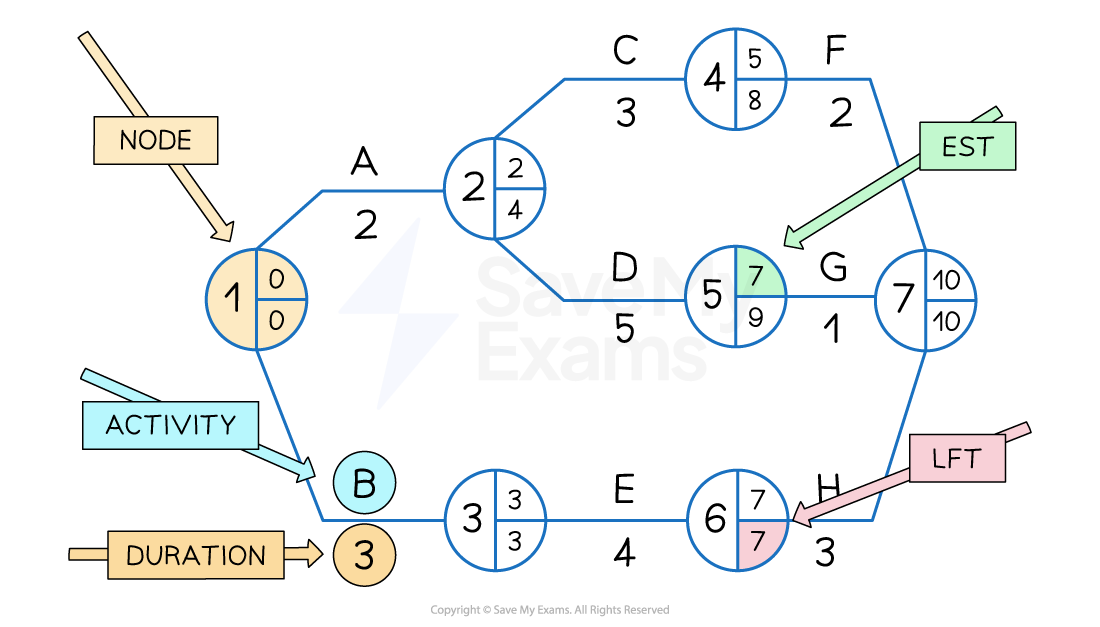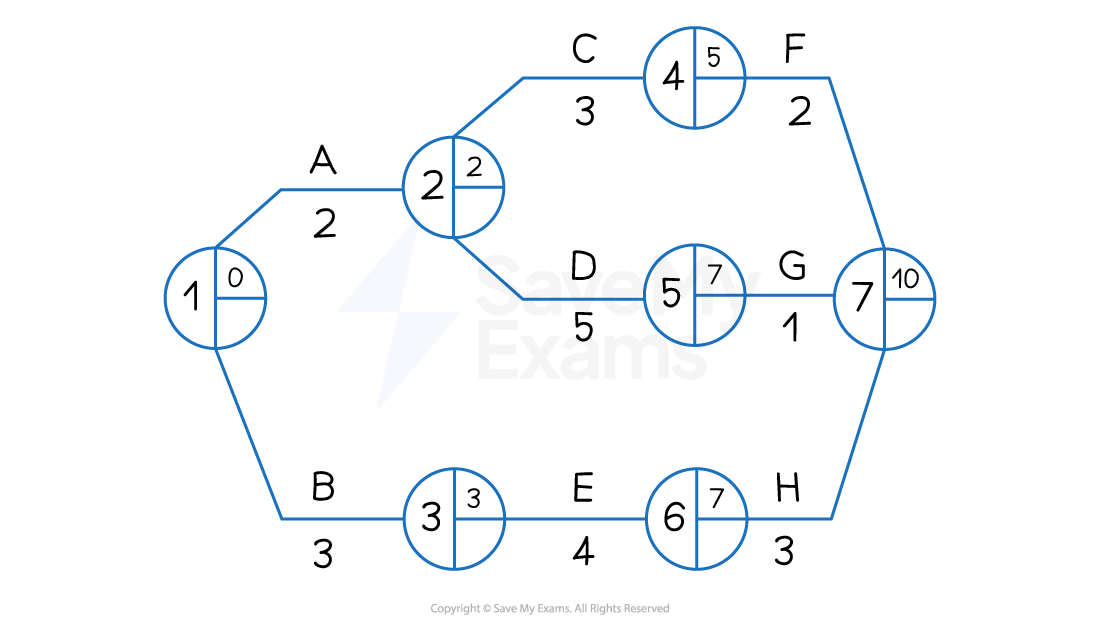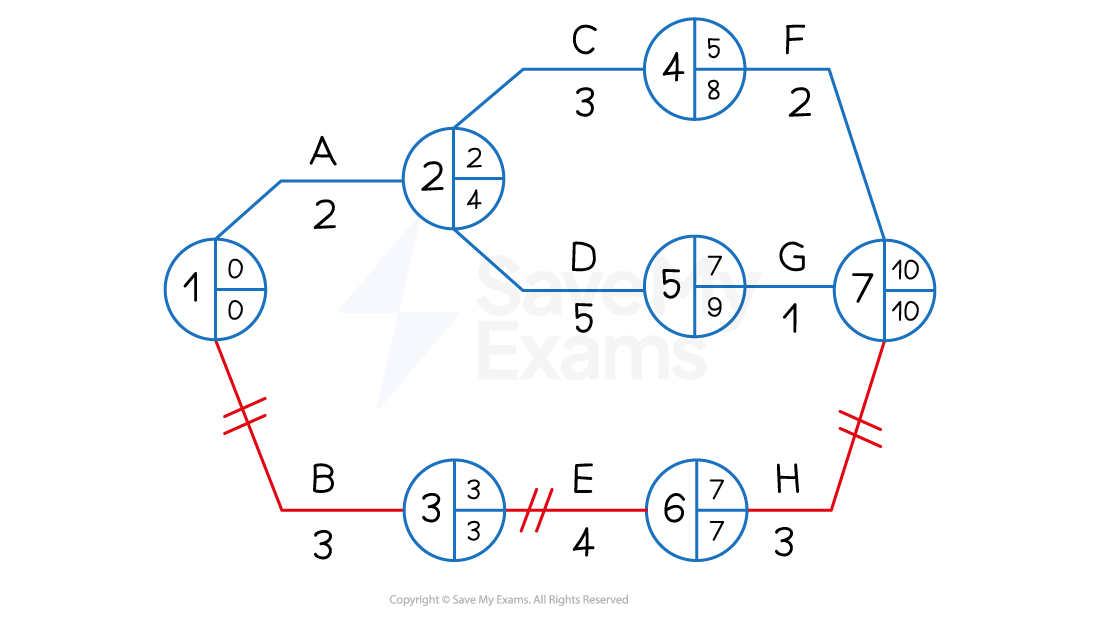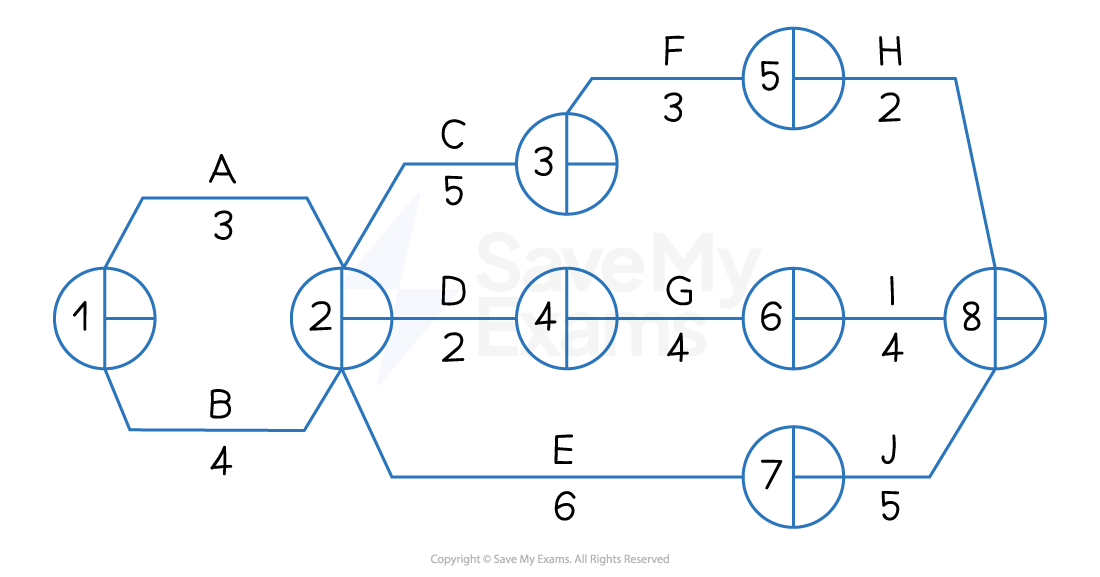Critical Path Analysis (Edexcel A Level Business): Revision Note
Exam code: 9BS0
The nature and purpose of critical path analysis
Critical path analysis is a project management tool that uses network analysis to plan complex and time-sensitive projects
Critical path analysis involves the construction of a visual model of the project that includes key elements:
A list of all activities required to complete the project
The time (duration) that each activity will take to complete
How each project activity depends on others
Critical path analysis shows:
The order in which activities must be completed
The longest path of project activities to the completion of the project
The earliest and latest that each project activity can start and finish without delaying completion of the project as a whole
Activities within a project that can be carried out simultaneously
The critical project activities that, if delayed, will cause the project as a whole to overrun
Those project activities where some delay is acceptable without delaying the project as a whole
The shortest time possible to complete the project
It allows managers to identify the relationships between the activities involved and to work out the most efficient way of completing the project
Resources such as raw materials and components can be ordered or hired at precisely the right time they are needed
Working capital may be managed efficiently
Where delays occur, managers can identify the implications for the project’s completion and redirect resources if required
Drawing critical path analysis diagrams
Components of network analysis diagrams
Element | Description |
|---|---|
Node |
|
Activities |
|
Duration |
|
Example network diagram

A network diagram must always start and end at a single node
Lines must not cross and must only be assigned to activities
Critical path calculations
Earliest start times

Working forwards from Node 1, it is possible to calculate the earliest start time (EST) for each activity by adding the duration of each task
The EST for each activity is placed in the top right of each node
Node 1 is the starting point of the project and where both Activity A and Activity B begin
Activity A and Activity B are independent processes
Activity A has a duration of two days, and its EST is zero days
Activity B has a duration of three days, and its EST is also zero days
Activity C and Activity D both begin at Node 2 and are dependent upon the completion of Activity A but are independent from each other
Activity C has a duration of three days, and its EST is two days
Activity D has a duration of five days, and its EST is also two days
Activity E begins at Node 3
Activity E has a duration of four days, and its EST is three days
Activity F begins at Node 4
Activity F has a duration of two days, and its EST is five days
Activity G begins at Node 5
Activity G has a duration of one day, and its EST is seven days
Activity H begins at Node 6
Activity H has a duration of three days, and its EST is seven days
Node 7 is the endpoint of the project
Latest finish times

Working backwards from Node 7, it is now possible to calculate the latest finish time (LFT) for each activity by subtracting the duration of each task
The LFT for each activity is placed in the bottom right of each node
Node 7 is the endpoint of the project, which has an LFT of ten days
Activity H has a duration of three days
The LFT in Node 6 is seven days (10 days − 3 days)
Activity G has a duration of one day
The LFT in Node 5 is nine days (10 days − 1 day)
Activity F has a duration of two days
The LFT in Node 4 is eight days (10 days − 2 days)
Activity E has a duration of four days
The LFT in Node 3 is three days (7 days − 4 days)
Activity D has a duration of five days
The LFT in Node 2 is four days (9 days − 5 days)
Activity C has a duration of three days
The LFT in Node 3 is four days because Activity D is the more time-critical of the two activities that are dependent upon the completion of Activity A, so its LFT is recorded
Activity B has a duration of three days
The LFT in Node 1 is zero days (3 days − 3 days)
Activity A has a duration of two days
The LFT in Node 1 is zero days because Activity B is the more time-critical of the two starting activities, so its LFT is recorded
The LFT in Node 1 is always zero
Identifying the critical path
The critical path highlights those activities that determine the length of the whole project
If any of these critical activities are delayed, the project as a whole will be delayed
The critical path follows the nodes where the EST and LFT are equal
In the diagram below, Nodes 1, 3, 6 and 7 have equal ESTs and LFTs
Activities that determine these nodes are B, E and H
These activities are marked with two short lines
The critical path is therefore BEH

Identifying and calculating float time
Float time exists where there is a difference between the EST and the LFT
Where float time is identified, managers may:
Transfer resources, such as staff or machinery, to more critical activities
Allow extra time to complete tasks to improve quality or allow for creativity

The total float refers specifically to the spare time that is available so that the overall project completion is not delayed
The total float for a specific activity is calculated using the formula
LFT for the activity − Duration of the activity − EST for the activity
Using the diagram above, the following total float times can be calculated for Activities A to H
Activity | LFT | - Duration | - EST | = Total float |
|---|---|---|---|---|
A | 4 | 2 | 0 | 2 |
B | 3 | 3 | 0 | 0 |
C | 8 | 3 | 2 | 3 |
D | 9 | 5 | 2 | 2 |
E | 7 | 4 | 3 | 0 |
F | 10 | 2 | 5 | 3 |
G | 10 | 1 | 7 | 2 |
H | 10 | 3 | 7 | 0 |
The critical activities B, E and H each have a total float of zero days
Worked Example
The network diagram below shows the activities involved in a new promotional campaign for a small fashion accessories business, as well as the time (in weeks) it is expected that each activity will take to complete.

Calculate:
a) The ESTs and LFTs for each node [4]
b) The total float time for Activity G [3]
Step 1: Calculate the ESTs
Node 1 EST = 0
Node 2 EST = 0 + 3 = 3, but 0 + 4 = 4 so 4
Node 3 EST = 4 + 5 = 9
Node 4 EST = 4 + 2 = 6
Node 5 EST = 9 + 3 = 12
Node 6 EST = 6 + 4 = 10
Node 7 EST = 4 + 6 = 10
Node 8 EST = 12 + 2 = 14, but 10 + 4 = 14, and 10 + 5 = 15, so 15 [2]
Step 2: Calculate the LFTs
Node 8 = 15
Node 7 = 15 − 5 = 10
Node 6 = 15 − 4 = 11
Node 5 = 15 − 2 = 13
Node 4 = 11 − 4 = 7
Node 3 = 13 − 3 = 10
Node 2 = 10 − 6 = 4
Node 1 = 4 − 4 = 0 [2]
Step 3: Calculate the total float time for Activity G
[3]
Limitations of using critical path analysis
Limitations | Explanation |
|---|---|
|
|
|
|
|
|
|
|

Unlock more, it's free!
Did this page help you?